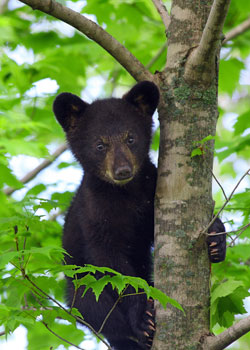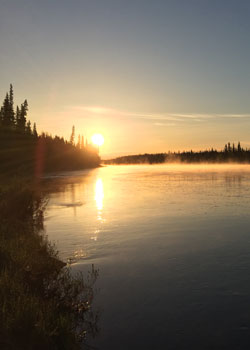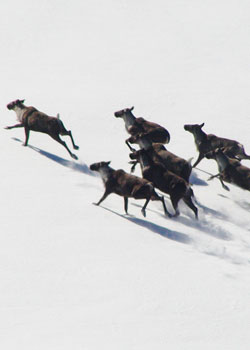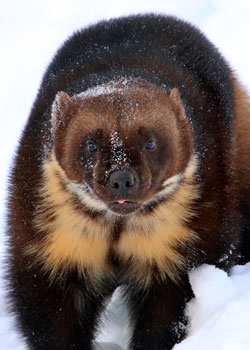The challenge
The boreal forests in northern Ontario represent one of the world’s largest remaining intact forests, and contain the third-largest wetland in the world (the Hudson Bay Lowlands). This massive area starts about 300km north of Thunder Bay, and stretches all the way to the shores of Hudson and James Bay, and has seen little of the industrial resource development and urban settlement that has transformed areas to the south. It is an important refuge in the province for wildlife such as caribou and wolverine, because they can find the kind of undisturbed forests that they need for survival. The area is a homeland for Anishnaabeg and Ininiw; many of whom currently live in 31 remote communities established under Treaty No. 9.
But there is growing interest in driving resource development in this globally unique region, particularly to exploit the Ring of Fire, a mineral-rich crescent about 400 km northeast of Thunder Bay. Extracting ore from the Ring of Fire will require building roads and transmission lines through areas that are currently wild forests, lakes, and wetlands, and crossing dozens of rivers and streams.
Punching roads and utility corridors through this intact area will lead to a cascading series of ecological and social impacts. We know that roads lead to more roads, and more activity in the forest, from mineral exploration to motorized recreation. For caribou and other wildlife, more roads also mean more access for predators, and more threats from humans, a recipe that has led to the disappearance of these animals in areas further south. Habitat changes brought about by forestry and mining will also affect wildlife survival.
The Ontario Northern Boreal also includes five of Canada’s few remaining undammed watersheds – a very rare commodity among the heavily dammed rivers of North America. Changes to aquatic habitat brought about by hydroelectric projects or road crossings could have big impacts on the more than 50 freshwater fish species found in the thousands of lakes and rivers that make this area as much water as land.
On top of all this, climate change is happening fastest at northern latitudes, meaning wildlife are already seeing disruption ranging from more intense fires to warmer waters.




What we are doing and why
To protect the integrity of this globally important area, we need to look at the big picture of how and where to accommodate resource development while sustaining the wild character of the region.
We are advocating approaches such as Regional Strategic Assessments that can be used to better understand the combined impact of roads, forestry, mines, and climate change on the region before we make decisions about individual development projects.
We are also working with Indigenous communities to develop knowledge by supporting community-based monitoring programs and co-developing research studies.
Because of the vast size of northern Ontario – the far northern part of the province is as far from Toronto as Florida, and is only accessible by air or winter ice roads – we have developed innovative approaches to everything from tracking wolverines to assessing the potential impacts of climate change on fish, so that we can create a more informed picture of what is at stake before development decisions are made.
Our strategies
We are making a strong case for bigger-picture planning for the Ontario Northern Boreal, through our studies that emphasize the benefits of such an approach, and through public outreach.
We are working with First Nations to support community-based monitoring, which can allow communities to track changes to the values most important to them.
We have led major population surveys on caribou and wolverine to document how these species are faring in our boreal forests. We continue to research their behaviour and abundance, and the impacts of development – such as roads – on these “umbrella” species.
Freshwater fish are currently faced with combined impacts from multiple developments and climate change, and we are using models to identify which are the biggest threats, to highlight which species will be most at risk, and to identify which watersheds are the most critical for protecting freshwater fish biodiversity.
We are leading on-the-ground research on wolverines, and we are working with Moose Cree First Nation to understand the impacts of dams on lake sturgeon in their traditional homeland.
Latest news